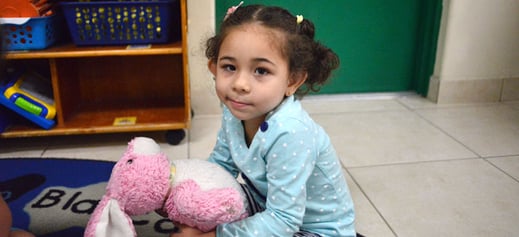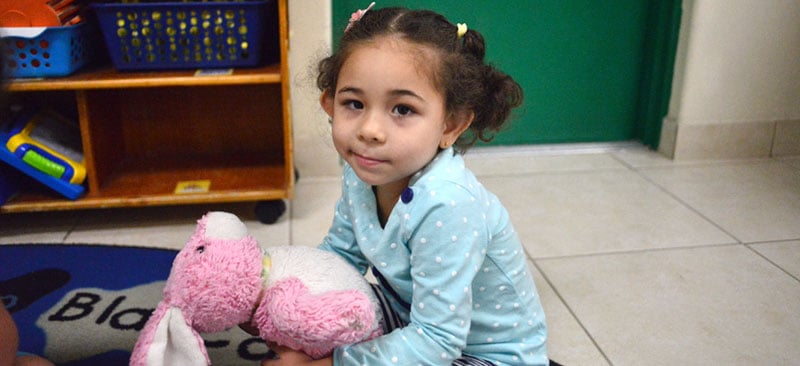

Through daily language interactions, bilingual parents permanently shape their young children’s cultural understanding by embracing not one, but two cultures. Adapting to a second culture isn’t easy for anyone—especially young children, as their language skills are still developing.
As a result, it’s crucial for early educators to apply simple techniques they can use when working with dual language learners in order to ease them into the transition of learning English as a second language. Being sensitive and mindful while working with bilingual families will help their children have a more positive experience adjusting to a new culture.
Maria Fatima Castro, Director of the Migrant Head Start Program in Santa Cruz, California, gave us her insight on the importance of cultural sensitivity when it comes to bilingual children in early education programs. Being the child of an immigrant family herself, Maria hopes to help those families in significant ways by training early educators in Head Start to provide quality early education practices that are also comfortable for the families.
“I felt I could relate to the chaos of the families’ lives [as migrants]. Plus, I loved trying to explaining the United States' cultures to newcomers. I could empathize with how they were torn between two countries and two cultures.”
Much of Maria's work for Migrant Head Start involves working with farmworkers’ families who move from one place to another in order to seek work. She makes sure that the family child care providers who care for the children are properly trained to offer high-quality early education and also to expose children to English. This is a particular challenge because most of the childcare providers speak Spanish and find it difficult to introduce English.
Maria trains her program’s early educators to apply cultural sensitivity towards their work with dual language learners: “I enjoy training the family child care providers on how to increase children’s home vocabulary, how to playfully introduce English, how to develop a curriculum that can work with preschoolers, babies and toddlers. Our biggest challenge is that our early educators deal with children with a variety of ages and skills and interests. It’s challenging to provide them with the best early education, that’s also stimulating and safe for different ages.”
“We also try hard to involve the parents with simple activities they can do in the home, and show them how to add a little bit of English through songs and games. Recently we purchased a beautiful picture dictionary for each family and each provider, and the provider highlights the page that supports the topic for the week. This encourages the parent to add new vocabulary and with the older children they can start doing a little bit of English. We also try to use study topics that are part of the parents’ lives, for example: the harvest, the flea market, vehicles, etc.”
Working with dual language learners in early education programs is not always part of the curriculum of training programs. However, it’s a crucial subject to be knowledgeable in as our populations become more diverse, and the chances of working with families from cultures other than our own become more common. We are building a bridge between our culture and theirs. Most importantly, in the process, we are helping those children balance the beauty and the difficulties of growing up in a dual-language, dual-culture environment.
As educators, we need to support dual language learners so that they don’t become overwhelmed at such young age. Ultimately, with our help, these children will learn and enrich their lives from both worlds as their early development flourishes.
Maria explains, “I don’t think [working with dual language learners] is emphasized enough. When the teachers get their credentials this isn’t a main topic, and dealing with second language learners should be a major focus in today’s society. But, the information is there, Head Start has strategies and resources, the PITC Program for infant/toddler caregivers has the strategies, there’s a great summary in the CDA® [Essentials] textbook on the topic, a short concise summary. The strategies are available, but we just need more educators remembering to focus on language and culture during their time in the classroom.”
Ways to Facilitate Early Education Strategies with Dual Language Learners
The following strategies are helpful to use with children whose second language is English. As they catch up to speed with the other English speaking children in your program, you can start introducing them to more complex language structures. Keep in mind that young children will use short phrases and words to communicate, as well as informal language, which is normal.
- Work with dual language learners either one-on-one or in small groups so you can give them as much attention as possible
- Use objects, pictures, and gestures when teaching
- Create hands-on experiences to “teach by doing” and pay attention to their responses, as their actions will show their English understanding
- Talk about the “here and now” through usage of present tense and simple syntax when speaking
- Use a lot of repetition and self-talk (talking out loud as doing an activity and exploring an environment)
- Slow down the rate of speech and repeat yourself when you need to
- If you know words in the child’s first language, you can speak them to make the child feel more at ease
When working with families of dual learners, keep in mind the importance of families’ home languages, which lay the foundation for cognitive growth in children. Young dual language learners will not become confused when English is introduced—they just need help sorting out both languages over time so that eventually bilingualism will take place as language acquisition develops further.
 Dr. Valora Washington is the CEO of the Council for Professional Recognition, which oversees the nationally acclaimed Child Development Associate (CDA®) Credential program.
Dr. Valora Washington is the CEO of the Council for Professional Recognition, which oversees the nationally acclaimed Child Development Associate (CDA®) Credential program.
